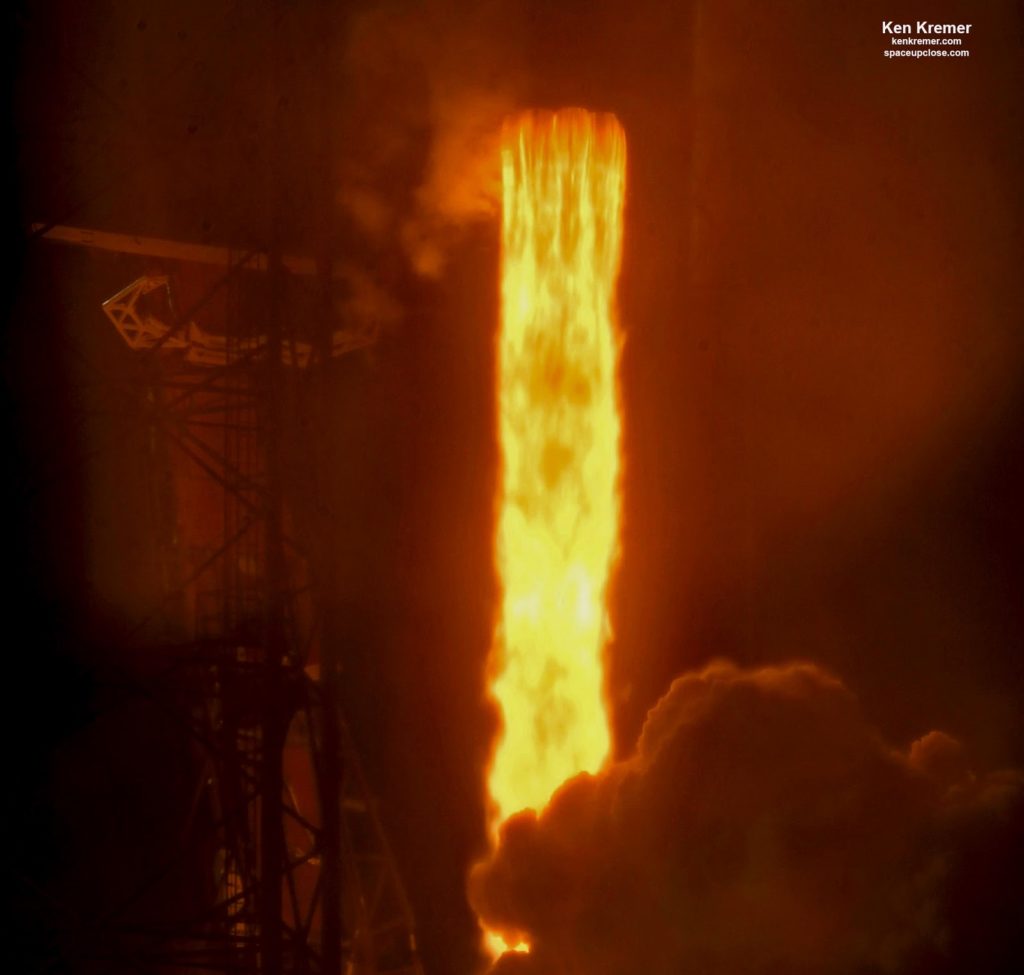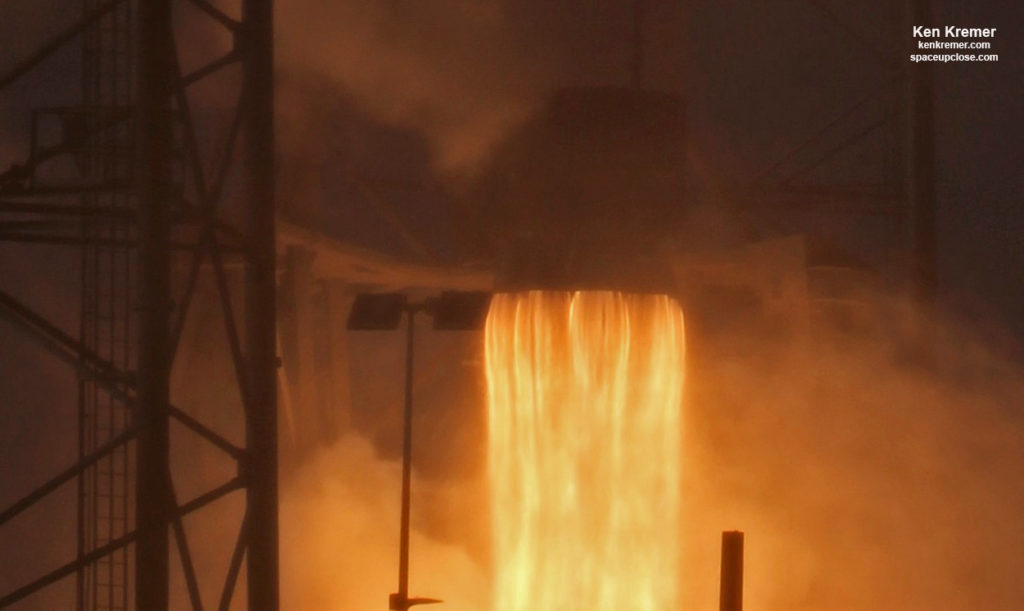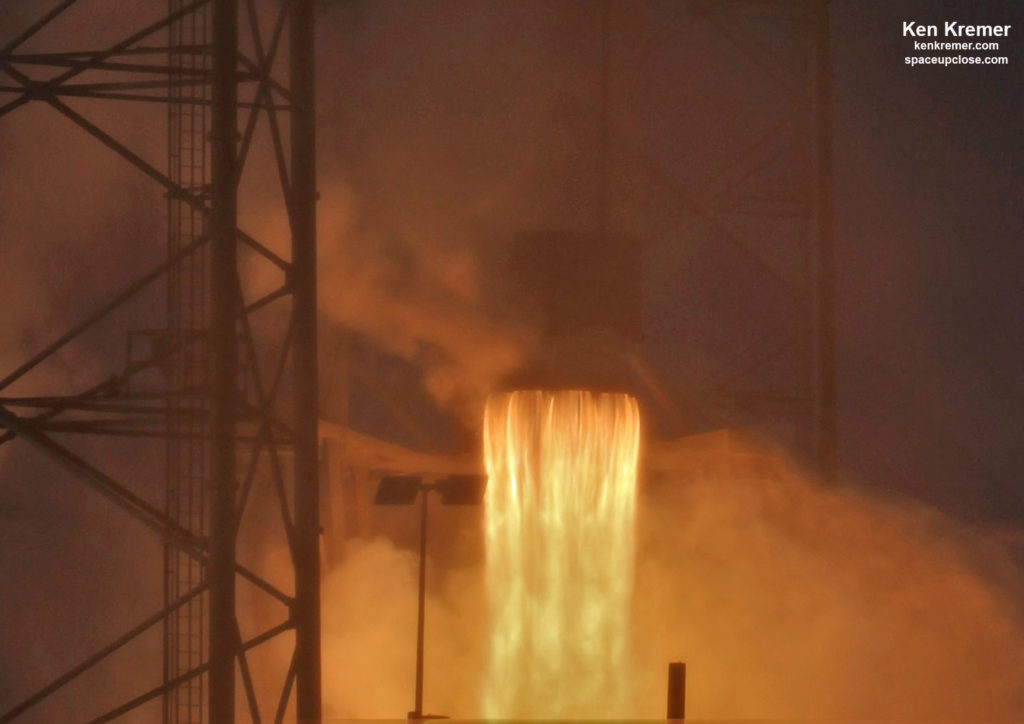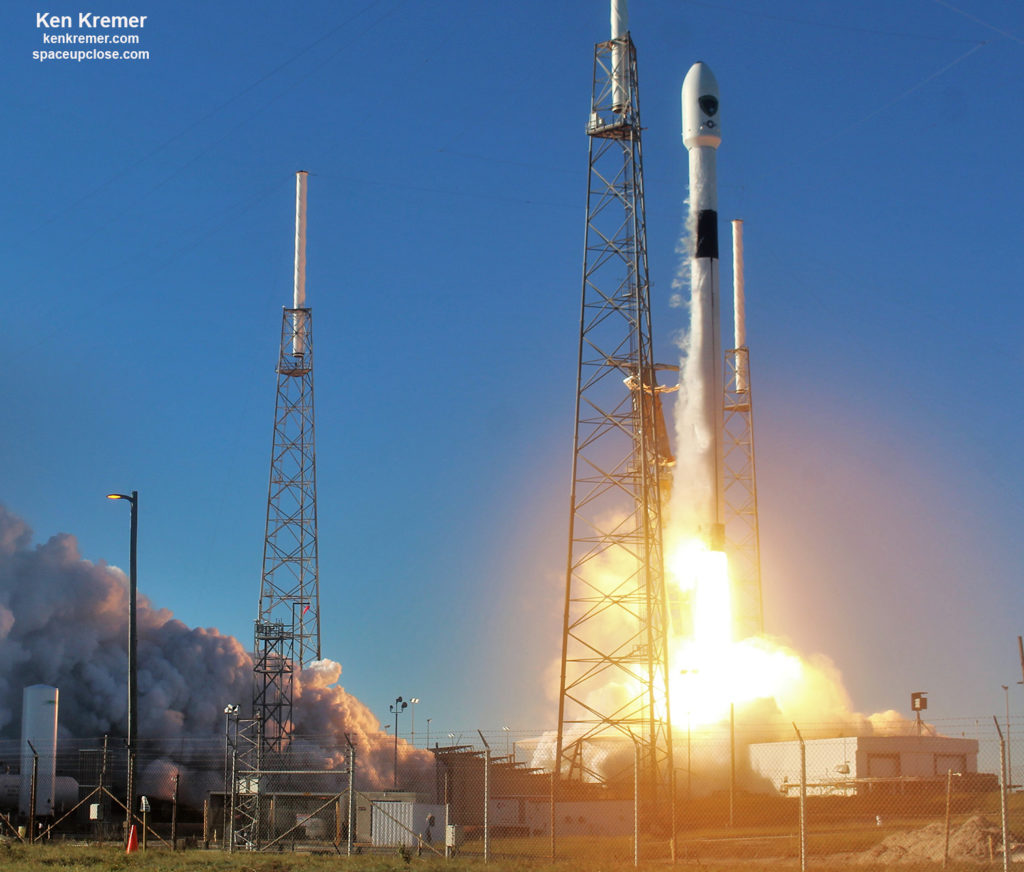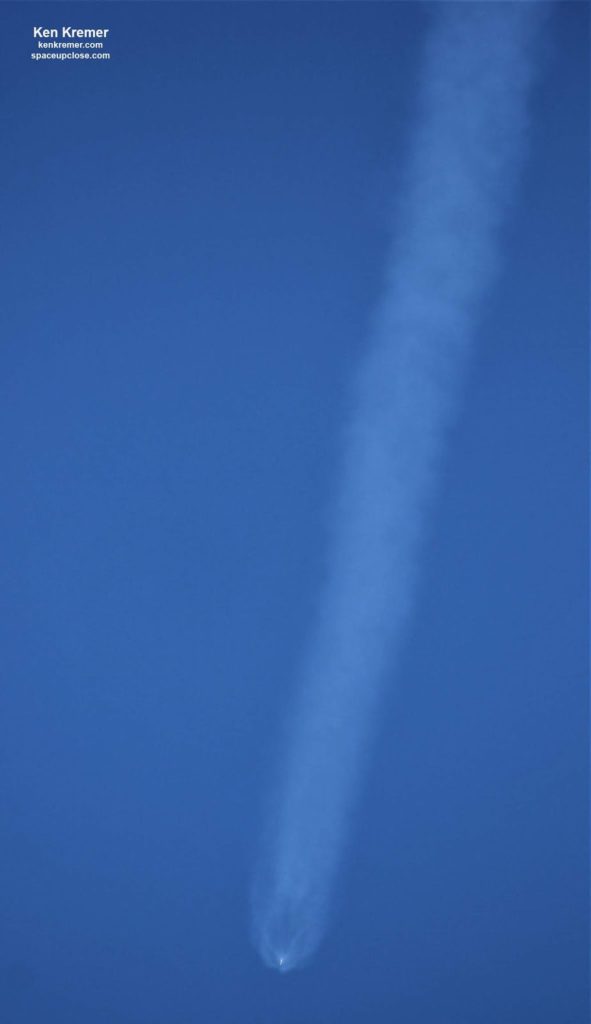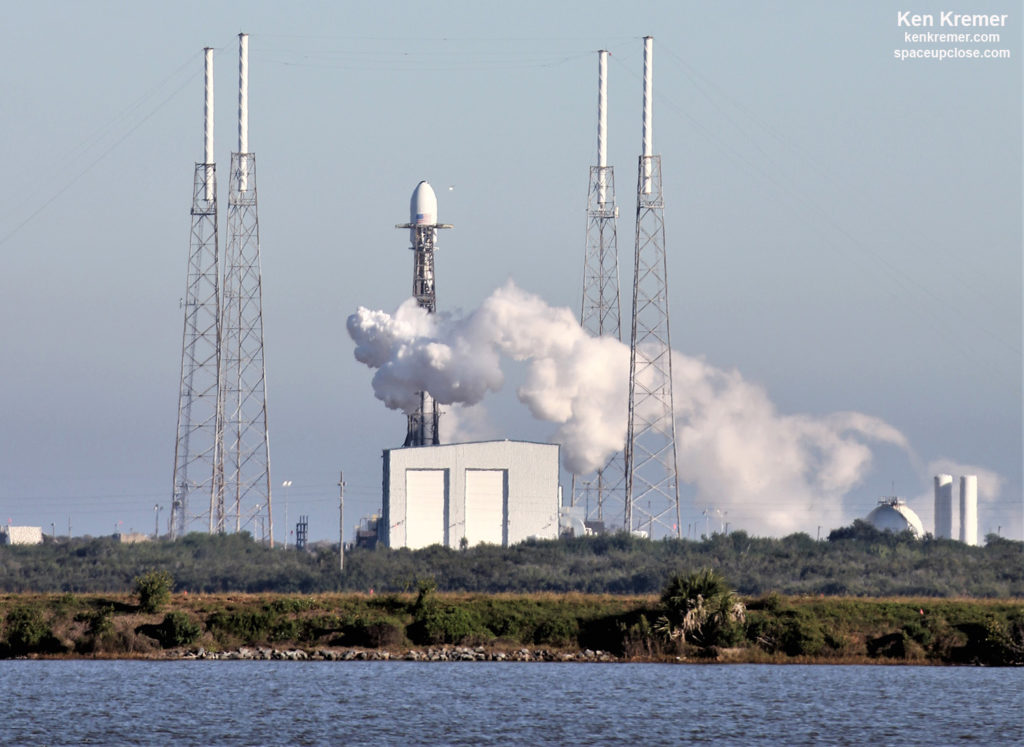RocketSTEM –25 December 2018
CAPE CANAVERAL
AIR FORCE STATION, FL – The first expendable SpaceX Falcon
9 rocket in the upgraded Block 5 series finally lifted off on the fifth try
Sunday morning successfully launching the first of the powerful new Global
Positioning Systems (GPS) III series satellites for the U.S. Air Force on Dec.
23 from America’s premier Spaceport in Florida.
The flawless blastoff of the 23 story tall SpaceX Falcon 9 carrying
GPS III Space Vehicle 01 satellite (GPS III SV
01) took place Dec. 23 at 8:51 a.m. EST (14:51 UTC), 5:51 a.m. Pacific, from Space Launch Complex-40 at Cape
Canaveral Air Force Station, Florida after almost a week of delays due to technical
and weather reasons.
The massive 5 ton Lockheed Martin-built
GPS III Space Vehicle 01 satellite is the most powerful Global Positioning
System (GPS) satellite ever built.
GPS III SV 01 has three times more accuracy and up to eight times improved
anti-jamming capability vs the currently orbiting GPS constellation. A vast improvement for both military and civilian users of GPS.
our Space UpClose eyewitness gallery of imagery of the launch as well as prelaunch
imagery taken of the Falcon 9 standing tall at pad 40 during our media remote camera
setups.
Eve Eve blastoff finally happened as the fifth launch attempt. It proved to be
fabulous as a SpaceX Falcon 9 finally flew to orbit carrying the maiden powerfully
new GPS III series of satellites Sunday morning, Dec 23 from the Florida Space
Coast.
Picture perfect skies greeted the Falcon 9 and spectators who
waited out four prior scrubs and witnessed a spectacular launch – the last of
the year for both SpaceX and America’s premier spaceport.
 |
| Credit: Ken Kremer/kenkremer.com/spaceupclose.com |
“GPS III SV01 is the first of an
entirely new design of GPS satellite which will help the Air Force modernize
today’s GPS constellation with new technology and advanced capabilities,” says
Lockheed Martin.
“GPS III has
three times better accuracy and up to eight times improved anti-jamming capabilities
than prior GPS satellites,” said Col. Steve Whitney,
Director, SMC Global Positioning Systems Directorate, at a prelaunch media
briefing.
GPS satellites
operate in medium earth orbit at an altitude of approximately 20,200 km (12,550
miles) in six planes. Each satellite circles the earth twice per day. GPS provides
the “Gold Standard” of position, navigation, and timing services for billions
of users worldwide. GPS III, the newest generation of GPS satellites. It brings
new capabilities to users, including three times greater accuracy, and up to
eight times improved anti-jamming capabilities, says the USAF.
It is the first in the $5.8 Billion GPS
III constellation that eventually will include up to 32 satellites counting a
recent $7.2 Billion USAF contract with Lockheed Martin to build an additional 22
GPS III Follow On (GPS IIIF) program
satellites.
This $500 million GPS III SV01 mission
is historic in a number of ways. In addition to being the first in the new series,
it counts as the first National Security Space (NSS) mission launched aboard a SpaceX
Falcon 9 launch vehicle from Cape Canaveral Air Force Station, Florida.
The new satellite will
also have a much longer design lifetime of 15 years, 25 percent longer than any
of the GPS satellites on-orbit today and double the 7.5 year lifetime of the initial
GPS series.
The Air Force nicknamed the satellite
“Vespucci” in honor of Amerigo Vespucci, the Italian explorer for whom the
Americas were named.
“Vespucci will augment the current 31-satellite
constellation to continue to provide the “gold standard” in positioning, navigation,
and timing services for more than four billion users worldwide,” says the USAF.
The Falcon 9 will launch in the upgraded Block 5
version on an expendable mission where the first stage booster will not be
recovered. There are no grid fins or
landing legs installed on the 15 story tall first stage.
This is the first Block 5 model to launch in an
expendable configuration and not be soft landed for recovery either by land or
by sea.
The Air Force wants every drop of fuel available
to hurl the GPS III SV01 satellite to the most efficient orbit and maximize the
amount of on-board fuel available and minimize the satellites need to utilize
the fuel reserves for orbit raising maneuvers.
The satellite was deployed to medium Earth orbit
approximately 1 hour and 56 minutes after liftoff.
 |
| Credit: Ken Kremer/kenkremer.com/spaceupclose.com |
The GPS III satellite has a wet weight of 9700
pounds (4,400 kilograms) and
is the size of an SUV.
The launch marked SpaceX’s 21st mission of 2018 and the 20th
overall from Cape Canaveral from all launch providers including ULA.
Watch for Ken’s continuing
onsite coverage of NASA, SpaceX, ULA, Boeing, Lockheed Martin, Northrop Grumman
and more space and mission reports direct from the Kennedy Space Center, Cape
Canaveral Air Force Station, Florida and Wallops Flight Facility, Virginia.
Stay tuned here for Ken’s continuing Earth and Planetary science
and human spaceflight news: www.kenkremer.com –www.spaceupclose.com – twitter
@ken_kremer – email: ken at kenkremer.com
journalist and photographer based in the KSC area.


